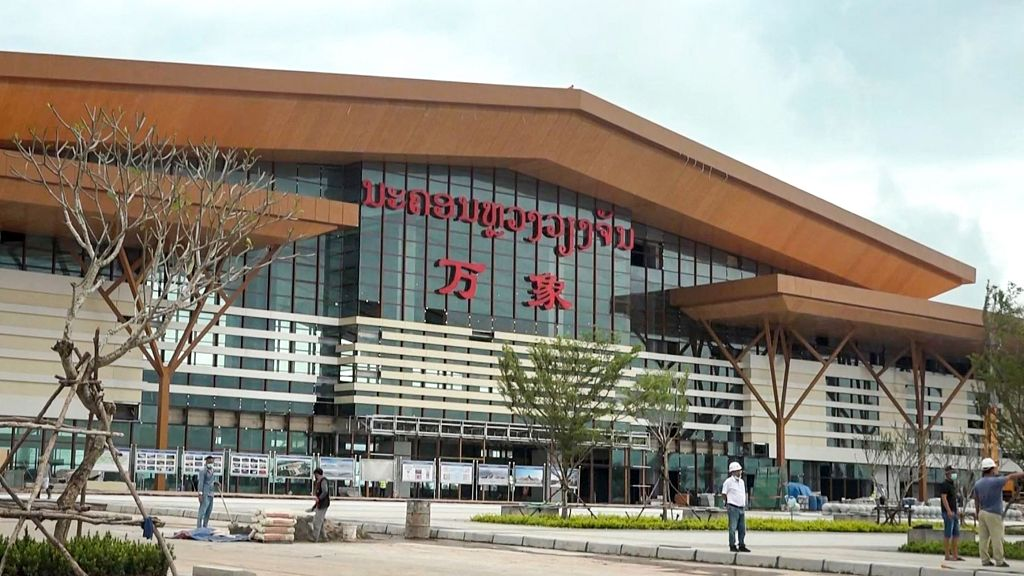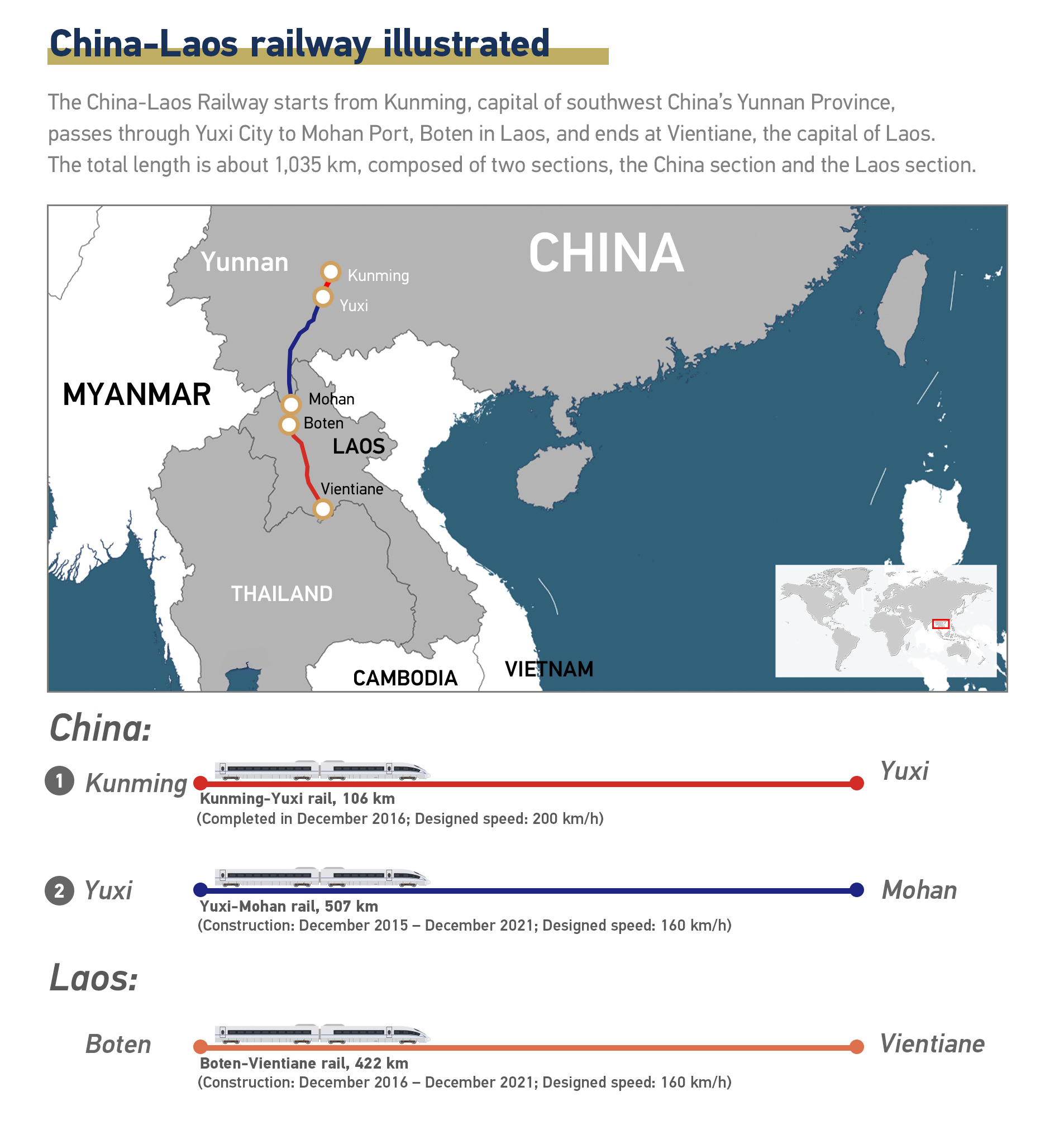
Vientiane Railway Station in Vientiane, Laos, October 16, 2021. /CFP
Vientiane Railway Station in Vientiane, Laos, October 16, 2021. /CFP
The launch of the over-1,000-kilometer China-Laos railway will facilitate land-based transit trade, help reduce transport costs and boost cross-border e-commerce.
The railway starts from southwest China's Kunming in the north, passes southward through Yuxi and Pu'er, both in China, and ends at Vientiane, the capital of Laos.
Transit trade will remain the largest share of freight rail traffic. The total transit trade by rail between China and the Association of Southeast Asian Nations (ASEAN) would account for more than half of the region's railway traffic and reach 3.9 million tonnes of freight by 2030, according to a World Bank report.
Based on existing land transport trends, it is estimated that the transit trade through Laos will grow from 2 million tonnes in 2016 to 3.4 million tonnes in 2030, and that land-based bilateral trade between China and Laos is expected to grow from 1.2 million tonnes in 2016 to 1.7 million tonnes in 2030, said the report.

Reducing transport costs
The travel time throughout the rail line is estimated to be 10 hours, well below the current road time of about 30 hours, cutting transport costs between Vientiane and Kunming by more than 30 percent, according to China's State-owned Assets Supervision and Administration Commission.
Yuxi in southwest China's Yunnan Province is expected to benefit from its location advantage to become an international logistics hub for South Asia and Southeast Asia.
Yuxi International Logistics Port, established under the roadmap of eastern and central routes of the Pan-Asia railway, will further boost the channeling ability of Yuxi to facilitate cross-border logistics and industrial cooperation.
In the port, some logistics and related zones and parks have been deployed, including an industry city integration zone, a business logistics zone, a small- and medium-sized enterprise incubator, an automobile comprehensive trading park, and a grain logistics industrial park.
As Vientiane, the capital of Laos, is already a gateway to both Thailand and the southern part of Laos, the station in the capital will be a multipurpose connectivity hub. Laos can benefit from increased regional transit trade by promoting the road link between the capital and the port in Laem Chabang in Thailand.

Railway performers on board a train on the China-Laos railway at Kunming Railway Station before the railway's launch, in Kunming, southwest China's Yunnan Province, December 3, 2021. /CFP
Railway performers on board a train on the China-Laos railway at Kunming Railway Station before the railway's launch, in Kunming, southwest China's Yunnan Province, December 3, 2021. /CFP
Trade and e-commerce
Bilateral trade volume between China and Laos will continue to grow given the convenience brought by the rail. In the first half of this year, the bilateral trade volume between the two countries reached $2.3 billion, up 48.1 percent year on year, data from China's commerce ministry showed.
In 2015, China and Laos built China and Laos Mohan-Boten Economic Cooperation Zone, the second cross-border economic cooperation area established by China and neighboring countries. The zone aims to facilitate trade, investment and personnel communications and accelerate the development of the border area of the two countries.
The new rail also unleashed fresh opportunities for cross-border e-commerce cooperation, coupled with a favorable e-commerce environment resulted from COVID-19.
Yunnan, which borders Laos, Myanmar, and Vietnam, has witnessed the rapid growth of cross-border e-commerce since the capital Kunming was designated a national-level comprehensive test zone for cross-border e-commerce.
In 2020, the import and export volume of cross-border e-commerce in Yunnan reached 1.35 billion yuan ($212 million), 13.13 times that of 2019, according to Kunming customs.
In May this year, the Kunming Area of China (Yunnan) Pilot Free Trade Zone signed a "Joint Innovation Cooperation Agreement" with the Mohan-Boten Zone to cooperate in eight areas, including cross-border commercial affairs, production capacity and e-commerce.
In July, the China Post Yunnan subsidiary transported the e-commerce goods sold to Thailand to Mohan port for customs clearance through land transit. It was the first time that cross-border e-commerce goods successfully cleared the Mohan port.
In August, China-Laos-Myanmar-Vietnam cross-border e-commerce training kicked off in Kunming, aiming to cultivate specialized talents in the field of cross-border e-commerce for the four countries.

